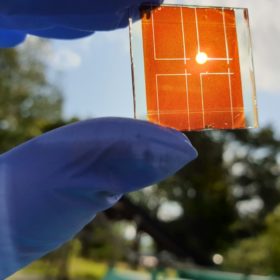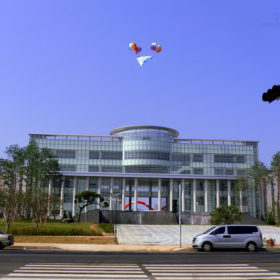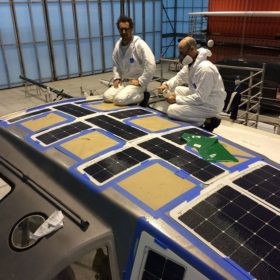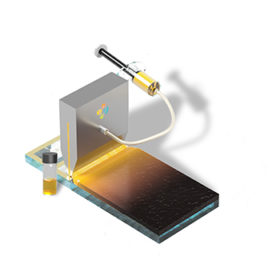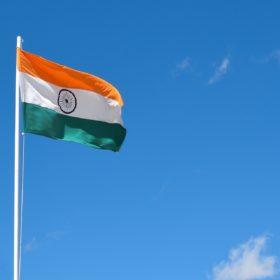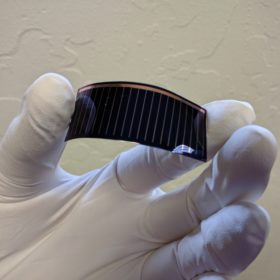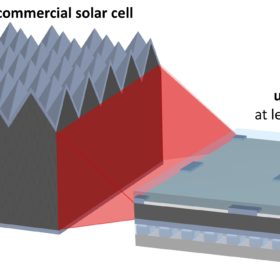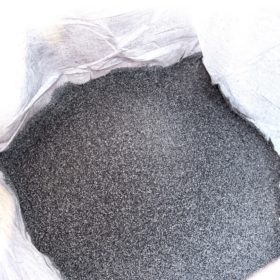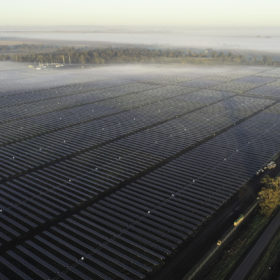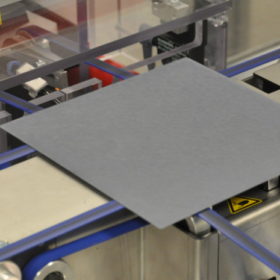New tech to apply perovskite thin-film layers to conventional solar panels
According to its creator, Swedish start-up Evolar, the new technology can be applied to existing production lines for crystalline silicon modules and increase a product’s efficiency by around 5%.
Cadmium sulfide-free kesterite solar cell with 11.22% efficiency
South Korean scientists have built a kesterite solar cell based on a zinc tin oxide (ZTO) buffer layer. It offers almost the same efficiency as kesterite cells based on toxic cadmium sulfide buffer layers, as the energy of the electrons between the kesterite absorber layer and ZTO buffer layer are aligned.
Non-stop worldwide PV-powered yacht race
The ninth edition of the Vendée Globe began on Nov. 8 from the French port of Sables-d’Olonne, for a complete world tour without stopovers or assistance. PV panel maker Solbian equipped several competitors with its flexible products.
23.8% efficient tandem cells via slot-die coating
Scientists in Saudi Arabia demonstrated a slot-die coating process for production of perovskite solar cells from a specially engineered ‘ink’. Using the process, the group fabricated a perovskite/silicon tandem cell that recorded 23.8% efficiency.
India announces $3bn package to attract solar module and advanced battery manufacturers
An ambitious, $19.5 billion, five-year expansion of a previous domestic industry spending program includes money to attract investment into the sustainable energy and transport technologies.
Equipment auction sounds final note for Hanergy-owned Alta Devices
If you’re interested in some lightly used MOCVD and PVD thin-film solar cell production equipment, have we got a deal for you.
Hurdles ahead for viable ultra-thin solar cells
A new French study highlights the potential of ultra-thin PV cells, but the road to commercial production will be challenging. The researchers have proposed a series of novel cell architectures integrating photonic and electronic elements.
New method to recover silicon from end-of-life modules
Compared to other techniques based on chemical reactors and organic solvents, the proposed method is said to be able to maintain a “good mechanical yield” in the recovered solar cells. According to its creators, this technique allows the reuse of silicon from the recycled panels in the production of new solar cells.
Chinese PV Industry Brief: Risen enters polysilicon production, JYT Corporation wants to build 24 GW polysilicon factory
China PV module manufacturer Risen Energy has completed the acquisition of Dunan Solar’s polysilicon business and is now operating a 12,000 MT factory. Shanghai-listed PV equipment supplier JYT Corporation wants to build a 24 GW polysilicon manufacturing facility in Sichuan Province.
Gigawatt-scale tandem PV cell output by 2022?
Frank van Mierlo, the CEO of 1366 Technologies, is a betting man. And he’s betting your humble narrator that high-efficiency tandem solar cells are the near-term commercial future of solar.
